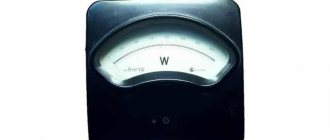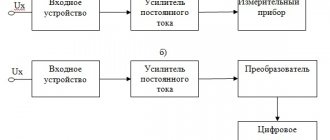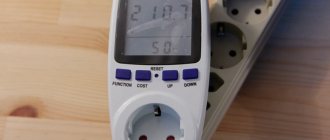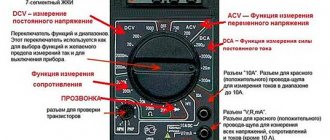Very often, when designing electrical circuits, radio amateurs are faced with the problem of measuring the power consumed by radio components. Experts in the metrological field recommend two methods that allow you to calculate and correctly calculate its value. In this case, it is necessary to analyze in more detail the physical meaning of the quantity, as well as its components on which it depends.
General information
When designing devices, you need to be able to correctly calculate the power of electrical equipment. This is necessary, first of all, for long-term operation of the device. If a product is subject to wear and tear, it may fail immediately or over a period of time.
This option is considered unacceptable, since there are types of equipment that must work without failure (artificial respiration apparatus, monitoring the level of methane in a mine, and so on), since human life depends on it. The main characteristics of electrical energy include the following: power, current, voltage (potential difference) and electrical conductivity (resistance) of materials.
Consumer power
Power should not be confused with electrical energy. The first unit of measurement is the watt (W), the name of which comes from the name of the famous physicist James Watt. The physical meaning of 1 W is the consumption of electrical energy per unit of time equal to 1 second (1 W = consumption of 1 joule per 1 second). There are derived units of measurement: milliwatt (1 mW = 0.001 W), kilowatt (1 kW = 1000 W), megawatt (1 MW = 1000 kW = 1000000 W), gigawatt (1 GW = 1000 MW = 1000000 kW = 1000000000 W) and etc. To measure electrical energy, special meters are used, and its unit of measurement is Wh.
Watt can be associated with some physical quantities: 1 W = 1 J/s = (1 kg * sqr (m)) / (c * sqr (c)) = 1 N * m/s = 746 l. With. The last numerical value is called electrical horsepower. Wattmeter - electrical power meter. However, its value can be determined in another way. To do this, one should analyze the physical quantities on which it depends.
Current strength
The amount of electrical charge that passes through a conductive material per unit time is called electric current. The quantity is abbreviated as amperage or current. It is denoted by the letters “I” or “i” and has a direction (vector quantity). The current is measured in amperes (A). There are also derived units formed using prefixes: 1 mA = 0.001 A, 1 kA = 1000 A, and so on. You can measure its value with an ammeter. To do this, it must be connected in series to an electrical circuit.
The physical meaning of a current of 1 A is the passage of an electric charge of 1 C (coulomb) in 1 second through the cross-sectional area S. 1 coulomb contains approximately 6.241 * 10^(18) electrons.
Current in scientific interpretation is classified into direct and alternating. The first type does not change its direction per unit time, but its amplitude values can change. The direction and amplitude of the alternating current changes according to a certain law (sinusoidal and non-sinusoidal). The main parameter is its frequency. The type of alternating current is determined using an oscilloscope.
Electrical voltage
From the physics course we know that every substance consists of atoms that have a neutral charge. They are made up of subatomic particles. These include the following: protons, electrons and neutrons. The first ones have a positive charge, the second ones have a negative charge, and the third ones are not charged at all.
The total charge of protons compensates for the charge of all electrons. However, under the influence of external forces, this equality is violated, and the electron “breaks out” from the atom, which already has a positive charge. It attracts an electron from a neighboring atom, and the process is repeated until the energy is minimal (less than the energy of “pulling out” the electron).
During interatomic interaction, an electromagnetic field with negative or positive components is formed. The difference between two points of oppositely sign components is called electrical voltage. The work done by an electromagnetic field to move a point electric charge from point A to point B is called potential difference. The physical meaning of voltage (U): a potential difference of 1 V between two point charges of 1 C, the movement of which requires the energy of an electromagnetic field equal to 1 J.
The unit of measurement is volt (V). You can determine the value of the potential difference using a voltmeter, which is connected in parallel. The following are considered derived units of measurement: 1 mV = 0.001 V, 1 kV = 1000 V, 1 MV = 1000 kV = 1000000 V, and so on.
Electrical circuit resistance
The electrical conductivity of a material depends on several factors: electronic configuration, type of substance, geometric parameters and temperature. Information about the electronic configuration of a substance can be obtained from D. I. Mendeleev’s periodic table. According to this information, substances are:
- Conductors.
- Semiconductors.
- Dielectrics.
The first group includes all metals, electrolytes (solutions that conduct current) and ionized gases. The carriers of electric charge in metals are electrons. In solutions, their role is played by ions, which can be positive (anions) and negative (cations). Free electrons and positively charged ions are considered free carriers of charged particles in gases.
Semiconductors conduct electricity only under certain conditions. For example, when exposed to external forces. Under their influence, the Coulomb bonds between the electron and the nucleus decrease. In this case, the negatively charged particle “breaks out”. In its place, a “hole” is formed with a positive charge. It attracts a neighboring electron, tearing it away from the atom. As a result, the movement of electrons and holes occurs. Insulators or dielectrics do not conduct electricity at all. These include materials without free charge carriers, as well as inert gases.
In conductors, as the temperature increases, the resistance value increases. In this case, destruction and distortion of the crystal lattice occurs. Charged particles collide (interact) with atoms and other particles of material. As a result, their movement slows down, but then resumes again under the influence of the electromagnetic field. The process of this “interaction” is called electrical conductivity of the substance. However, in semiconductors, this value decreases with increasing temperature. The geometry of materials includes the following: length and cross-sectional area.
Resistance is measured in Ohms (Ohm) using an ohmmeter, which is connected in parallel to a section of the circuit or radio component. There are derived units of measurement: 1 kOhm = 1000 Ohm, 1 MOhm = 1000 kOhm = 1000000 Ohm.
Voltage and reactive power control
These are two aspects of the same impact that maintain reliability and facilitate commercial transactions in transmission networks. On an alternating current (AC) power system, the voltage is controlled by controlling the production and absorption of Q. There are three reasons why this type of control is necessary:
- Power system equipment is designed to operate over a range of voltages, typically within ±5% of rated voltage. At low voltage, equipment performs poorly, light bulbs provide less illumination, induction motors can overheat and be damaged, and some electronic devices will not work at all. High voltages can damage equipment and shorten its life.
- Q consumes transmission and generation resources. To maximize the actual power that can be transmitted over a congested transmission interface, Q flows must be minimized. Similarly, the production of Q can limit the actual output of the generator.
- The driving reactivity in the transmission network incurs real power losses. To make up for these losses, power and energy must be compensated.
The transmission system is a nonlinear consumer of Q depending on the system load. At very low load the system generates Q which must be absorbed, and at high load the system consumes large amounts of Q which must be replaced. System Q requirements also depend on the generation and transmission configuration. Consequently, system reactive requirements change over time as load levels and load and generation patterns change.
The operation of the system has three purposes for controlling Q and voltages:
- It must maintain sufficient voltage throughout the entire transmission and distribution system for both current and unexpected conditions.
- Ensure that congestion of actual energy flows is minimized.
- Strive to minimize actual power losses.
A bulk energy system consists of many pieces of equipment, any of which can be faulty. Thus, the system is designed to withstand the failure of individual equipment while continuing to operate in the best interests of consumers. This is why the electrical system requires real power reserves to respond to unforeseen circumstances and maintain Q reserves.
Measurement methods
Power can be determined in two ways : indirect and direct. In the first case, this is done using an ammeter and voltmeter, as well as an oscilloscope. The voltage and current values are measured, and then the power is calculated using the formulas. This method has one drawback: the power value is obtained with some error.
When using the direct method, a special measuring device is used. It is called a wattmeter and shows the instantaneous power value. Each method has its own advantages and disadvantages. Which method is most optimal is determined by the radio amateur himself. If you are designing any product that is reliable, then the direct method should be used. In other cases, it is recommended to use the indirect method.
Indirect method
Power in DC and AC circuits is determined in various ways. Each case has its own laws and formulas. However, the power can not be calculated, since it is indicated on the electrical equipment. The calculation is used only when designing devices.
For DC circuits, you need to use the formula: P = U * I. It can be derived from Ohm's law for a section or a complete circuit. If a complete circuit is considered, then the formula takes a different form taking into account the EMF (e): P = e * I. Basic relations for the calculation:
- For a section of an electrical circuit: P = I * I * R = U * U / R.
- For a complete circuit in which the electric motor is connected or the battery is charging (consumption): P = I * e = I * e - sqr (I) * Rin = I * (e - (I * Rin)).
- The circuit contains a generator or galvanic element (return): P = I * (e + (I * Rin)).
These relationships cannot be applied to alternating current circuits, since it obeys other physical laws. When measuring power in AC circuits, its components (active, reactive and apparent) should be taken into account. If there is only a resistor in the circuit, then the power is considered active. If there is capacitance or inductance, it is reactive. Total - the sum of the active and reactive components.
To calculate the first type of physical quantity, a formula of the following form is used: Ra = I * U * cos (a). The current and voltage values are root mean square, and cos(a) is the cosine of the angle between them. To determine reactive power, you need to use the following formula: Qр = I * U * sin (a). If the load in the circuit is inductive, then the value will be greater than 0. Otherwise, less than 0. The total power P is determined by the following relationship: P = Pa + Qp.











